
 Harry Wagner
Contributor
Harry Wagner
Contributor
“Choosing quality recovery components is important”
Ford versus Chevy. Old country versus new country. Steel versus synthetic cable. Some disputes will never be resolved. (Well, expect old country versus new country; that one is a no-brainer.) The latest debate in the 4WD community is which attachment point belongs at the end of your winch, a hook or a thimble? There are compelling arguments on each side, so we grabbed two of the best products on the market in order to compare them ourselves on the trail.
The Factor55 ProLink has been a hot seller since it debuted on the market a few years ago. Factor55 promotes closed-system winching, where there is no possibility of a hook slipping off a strap or recovery point. Factor55 states that the hook opening of the standard hook included with most winches is too small to safely attach two ends of a common recovery strap. As a result, most off-roaders use a screw pin shackle to hold the strap anyways. Factor55 also notes that the load on a winch is often variable, and when the load is removed there is the potential for the hook to slip off. Not so with closed-system winching.
Master Pull’s gated Combi Lock Sling Hook is not the standard “lowest bidder” hook that comes on most winches. As such, it provides a more reasonable comparison with the Factor55 ProLink. Weighing only 2 pounds, rated Grade 110, and rated for 25,000 pounds, each hook is electromagnetically crack tested for quality assurance before being shipped out. Unlike Master Pull’s Cobra Sling Hooks, the Combi Lock Sling Hook as a swivel at the base, ensuring that it never binds and can easily accommodate any recovery position.
Testing these products didn’t necessarily sway anyone over from the thimble camp to hooks or vice versa. What it did do was reveal that the quality of your recovery components is more important than how they function. Let the debate rage on.
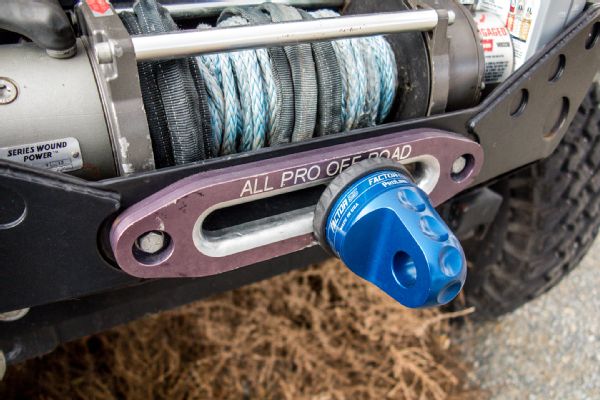
When the Factor55 ProLink is spooled in, it sits flat against the fairlead. This is the case for both hawse fairleads (shown) and roller fairleads. We prefer hawse fairleads with synthetic winch line and roller fairleads with steel cable.
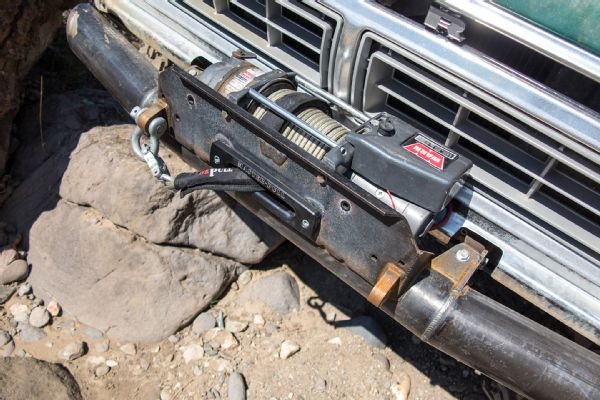
When our Master Pull Combi Lock Sling Hook is spooled in on our Ford, we hook it to the front recovery point. This does expose some of the winch line to potential damage, but does not reduce the approach angle any more than the ProLink does.
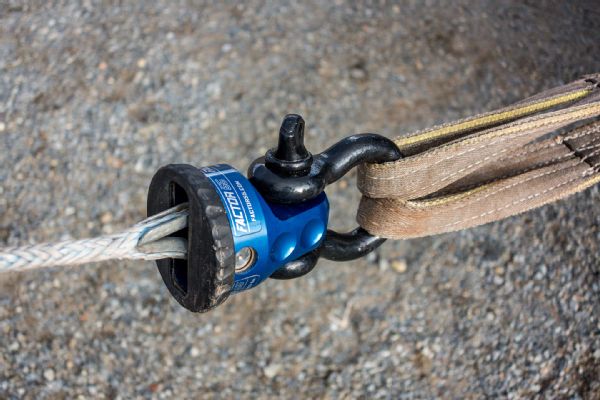
Daystar has an option for spooling a hook all the way in to your fairlead if that is your preference, and it doubles as a winch damper as well. They are available for both hawse and roller fairleads in a variety of colors.
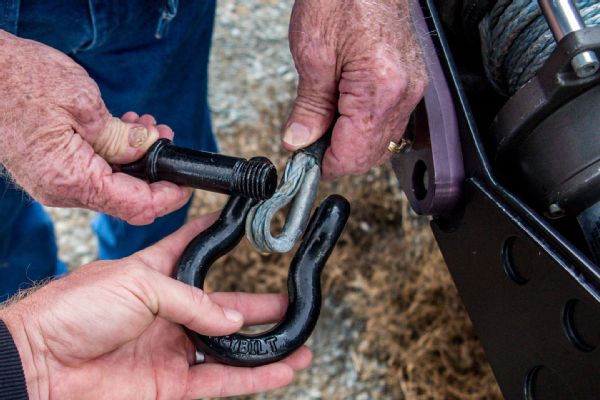
Some people have suggested removing the Factor55 thimble altogether and just running a screw pin shackle through the eye of the winch line. This eye is also called a thimble, but we will refer to it as the eye to avoid confusion with the Factor55 thimble. A 3/4-inch shackle will not fit through the eye of the winch line. Also note how the eye was damaged when we spooled it into the fairlead with nothing to stop it.
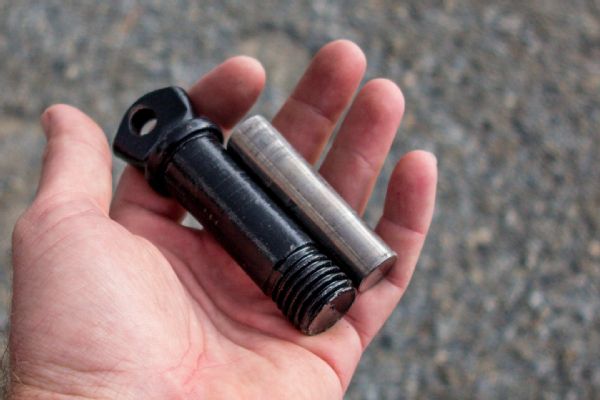
The 5/8-inch Factor55 shear pin is smaller than the standard 3/4-inch shackle, allowing it to fit through the eye of the winch line. It is constructed from titanium and has a 130,000-psi yield strength.
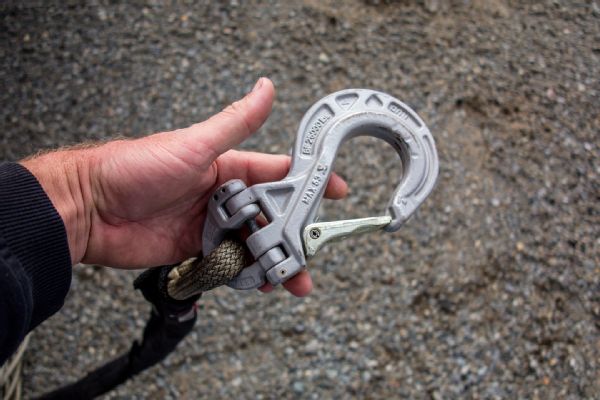
The Master Pull Combi Lock Sling Hook isn’t the sort of thing you are going to find on the shelf at your local hardware store. For safety, the hook is cast with gauge marks to measure deformation along the opening of the hook. Wear marks on the hook opening show the statutory allowable wear limit.

Hooking a strap up to the Factor55 ProLink with a screw pin shackle demonstrates the closed-system winching that the company references. There is no chance of the strap slipping off of the shackle. Antagonists of the ProLink point out that this takes longer than just using a hook, but we find the time difference to be negligible in most situations.
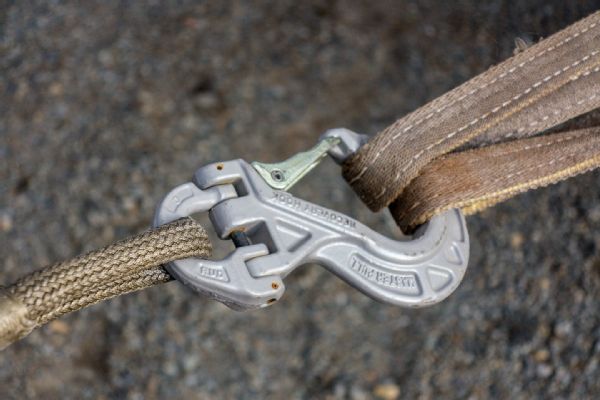
While an improperly sized hook will not have a throat large enough to fit a strap 2 or 3 inches wide, this is not an issue for the Combi Lock Sling Hook. A heavy-duty forged safety latch engages the tip of the hook to prevent lateral bending, and a triple-coiled stainless steel spring keeps it in place.
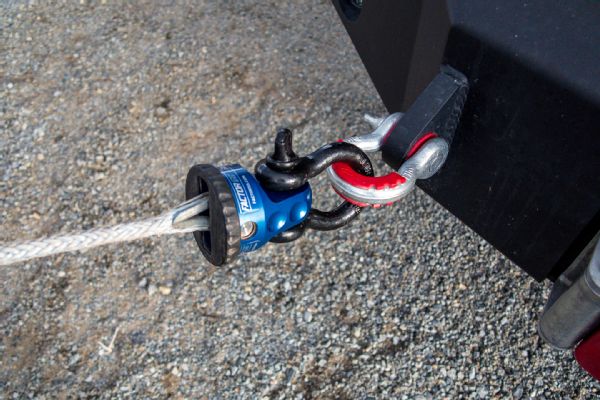
Attaching the Factor55 ProLink to a recovery point like the D-rings on our front bumper requires two screw pin shackles. There is no loss in strength in this scenario, and it is still closed-system winching, but it does require more hardware.
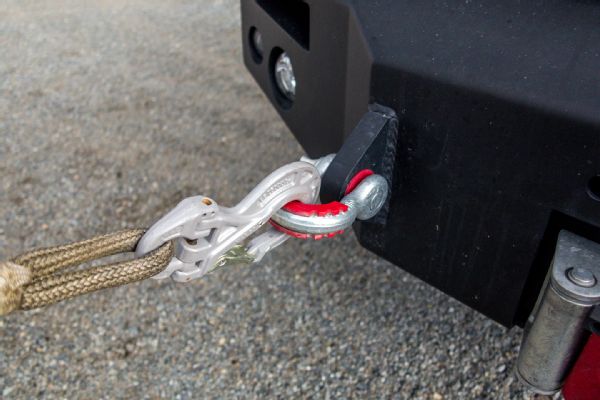
The Master Pull Combi Lock Sling Hook quickly and easily attaches to the screw pin shackle located on our front bumper. We put the hook with the opening down to remove any concerns about it falling off the shackle, even though that should not be an issue with the Master Pull hook.
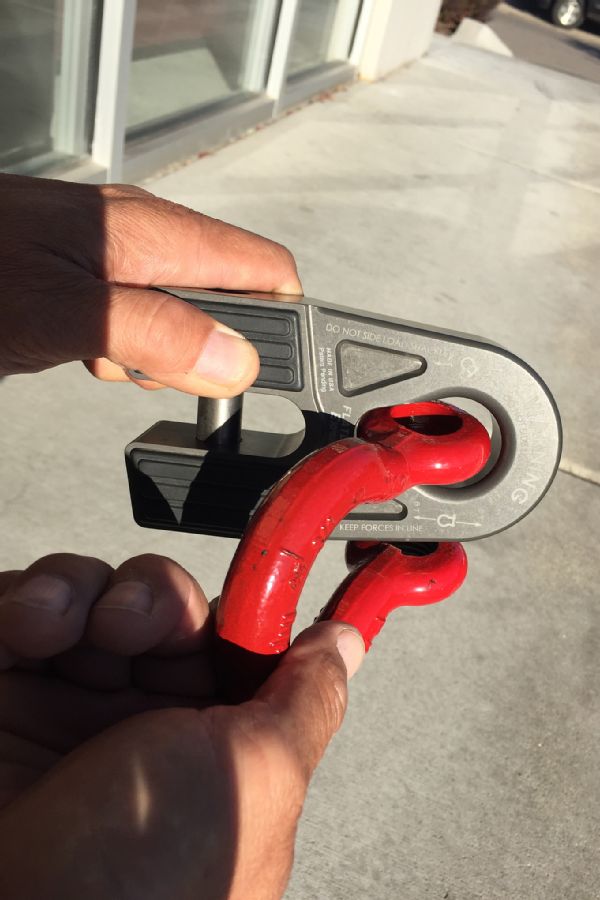
The Factor55 FlatLink has a larger opening than the ProLink, removing the need for two screw pin shackles in the above scenario. The FlatLink also does not protrude as much in front of the fairlead, increasing approach angle relative to the ProLink.
